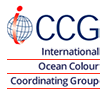Chair:
Dr. Cédric Jamet
LOG, France
Email: cedric.jamet@univ-littoral.fr
Co-Chairs
Dr. Peng Chen
SEOD/SIO, China
Email: chenp@sio.org.cn
Dr. Davide Dionisi
CNR-ISMAR, Italy
Email: davide.dionisi@artov.ismar.cnr.it
Established: April 2025
- Working group proposal and Presentation at the IOCCG-29 Committee Meeting, April 2025
Scientific and programmatic background and rationale
Among existing remote sensing techniques, lidar (Light Detection And Ranging, an active remote sensing technique that produces its own signal) is particularly promising for ocean applications as it can overcome some limitations of passive remote-sensed observations (Hostetler et al., 2018; Jamet et al., 2019; Behrenfeld et al., 2023). Lidar has the capability to provide vertical profiles of the particulate backscattering and seawater attenuation coefficients. A substantial additional advantage of lidar is that it operates during night-time, thus allowing for a proper exploitation of measurements carried out by polar orbiting missions during the night portion of their orbits, and monitoring latitudes up to 88° North-South. These measurement capabilities are not available from passive sensors and their availability enables profound scientific discoveries including detection of diel vertically migrating zooplankton and polar phytoplankton phenology (Behrenfeld et al., 2017, 2019). Lidar has also been used to identify atmospheric correction errors in ocean colour (Bisson et al., 2021a,b) and has been used in tandem with ocean colour to retrieve new inherent optical properties (Bisson et al., 2023). Thus, lidar systems have the potential to strongly enhance our observational capabilities for diverse atmospheric and oceanic conditions and climate scenarios and ultimately allow one to obtain a much more complete picture of a number of ocean-related scientific questions.
Despite other oceanic applications, lidar has not received significant attention from the ocean colour community. Several reasons can explain this: cost and size of the instrument, no commercially-available shipborne oceanic profiling lidar, lack of sampling swath and low revisit time frequency for space-borne lidar, few available wavelengths (typically 355, 486 and/or 532 nm), lack of a dedicated space-borne oceanic profiling lidar, lack of training, lack of full understanding for lidar’s multiple scattering effect, lack of software and tools to process the data, and lack of deep links between lidar observations and ocean colour parameters.
The Working Group will provide an overview of the capabilities of lidar technique to study and monitor the upper ocean layer from ships, airplanes and satellites, and will discuss advantages and limitations. An emphasis will be on recommendations and actions needed to be taken in terms of training, instrumentations and algorithms development. With the lidar space mission, CALIGOLA, in preparation by the Italian Space Agency and NASA for launch in 2032, there is an urgent need for greater understanding of lidar applications. CALIGOLA (space-borne lidar) will have oceanic profiling capabilities that can greatly benefit the ocean colour community if the right training and knowledge is in place.
Terms of Reference
- To showcase the use of Lidar, an active remote sensing technique, for studying the ocean
- To explain and to train the ocean color community on the basics of lidar instrumentation and data
processing - To provide sample data and codes for visualizing and processing lidar data
- To provide examples of applications of lidar for oceanic studies
- To discuss the advantages and limitations of lidar to monitor the upper ocean layer
- To provide recommendations and actions for increasing the use of lidar in the ocean color
community in term of training, instrumentation, algorithms and good practice - To prepare a report on lidar for ocean applications for the IOCCG Report Series
Members
- Kelsey Bisson, NASA HQ, USA
- Peng Chen, SEOD/SIO, China
- Brain Collister, NASA Langley, USA
- Davide Dionisi, CNR, Italy,
- Paolo Di Girolamo, Universita di Basilitaca, Italy
- Cédric Jamet, LOG, France
- Xiaomei Lu, NASA Langley, USA
- Iwona Stachlewska, Warsaw University, Poland
- Siqi Zhang, SEOD/SUI, China
- Yudi Zhou, Zhejiang University, China


 The sixth International Ocean Colour Science (IOCS) meeting will take place in Darmstadt, Germany from 1 – 4 December 2025, hosted by EUMETSAT and ESA with support from other agencies.
The sixth International Ocean Colour Science (IOCS) meeting will take place in Darmstadt, Germany from 1 – 4 December 2025, hosted by EUMETSAT and ESA with support from other agencies.